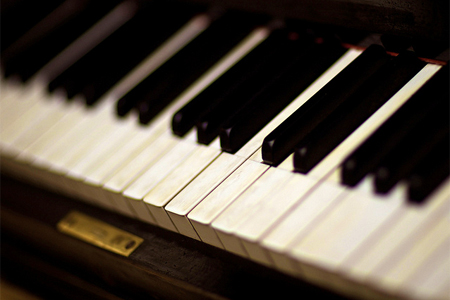Pianos are often some of the oldest structures within the home. As these musical antiques are passed down through the generations, they naturally develop a foul mildew stink.
Although the piano may create a unpleasant odor, there do exist a range of household solutions for extracting the odor from the musical instruments to return them to normal. By following the solutions below, you can be sure that your piano will be smelling fresh regardless of how old it may be.

Solutions for Removing Smell from Pianos
1 Polish Piano with Soft Cloth
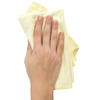 Often all that is needed to remove an odor within a piano is to republish the instrument. Aggregated dust can build within the surface of the piano and a simple polish with a soft cloth can help to gentiles lift away any musty buildup that may be resting on the piano. It important to first try gentile solutions that will not harm the pianos finish before moving into solutions that contain stronger chemicals.
Often all that is needed to remove an odor within a piano is to republish the instrument. Aggregated dust can build within the surface of the piano and a simple polish with a soft cloth can help to gentiles lift away any musty buildup that may be resting on the piano. It important to first try gentile solutions that will not harm the pianos finish before moving into solutions that contain stronger chemicals.
2 Light Solution of White Vinegar
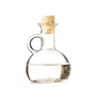 This household acid is one of the most effective solutions against the microscopic mildew that may gather on the pianos surface. Mix a formula of one part white vinegar to ten parts water and dunk a soft cloth within the solution. Proceed to wring out the majority of the moisture from the cloth before proceeding to wipe down the entire piano. It is important that no area is left untouched to ensure the complete eradication of the odor. Finish by opening windows within the room to allow for any moisture lingering on the piano’s surface to quickly evaporate away.
This household acid is one of the most effective solutions against the microscopic mildew that may gather on the pianos surface. Mix a formula of one part white vinegar to ten parts water and dunk a soft cloth within the solution. Proceed to wring out the majority of the moisture from the cloth before proceeding to wipe down the entire piano. It is important that no area is left untouched to ensure the complete eradication of the odor. Finish by opening windows within the room to allow for any moisture lingering on the piano’s surface to quickly evaporate away.
3 Charcoal Briquettes Inside
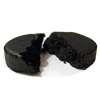 As a noninvasive solution, high quantities of activated charcoal briquettes can be used to absorb the unwanted smell lingering within the instrument. Begin by opening the piano up and placing activated charcoal briquettes through the interior of the instrument within key locations where they are sure to pull in as much odor as possible. Allow the charcoal briquettes to sit within these locations until the odor has been eliminated. As a general rule of thumb, you may need to look for alternative deodorizing solutions if the charcoal briquettes has not had a desired effect after 2 weeks.
As a noninvasive solution, high quantities of activated charcoal briquettes can be used to absorb the unwanted smell lingering within the instrument. Begin by opening the piano up and placing activated charcoal briquettes through the interior of the instrument within key locations where they are sure to pull in as much odor as possible. Allow the charcoal briquettes to sit within these locations until the odor has been eliminated. As a general rule of thumb, you may need to look for alternative deodorizing solutions if the charcoal briquettes has not had a desired effect after 2 weeks.
4 Baking Soda Socks
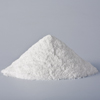 In a similar fashion to activated charcoal, baking soda can be used to absorb musty odors from the interior of the piano. Place a half cup of baking soda within 4 socks. Proceed ti tie the socks and place them within strategic locations within the interior of the piano. Allow them to work their magic for 2-3 weeks before removing them fresh your freshened piano.
In a similar fashion to activated charcoal, baking soda can be used to absorb musty odors from the interior of the piano. Place a half cup of baking soda within 4 socks. Proceed ti tie the socks and place them within strategic locations within the interior of the piano. Allow them to work their magic for 2-3 weeks before removing them fresh your freshened piano.
5 Enzyme Wipedown
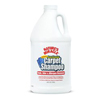 As a final solution, wiping down the piano with enzyme solution can be effective against especially difficult musty odors. The active enzymes within the solution will actually eat through the odorous mildew organics on the surface to leave it smelling fresh. Pour a small amount of this formula within a bowl and proceed to moisten a soft cloth within the formula. Begin wiping down the entire surface of the piano and making sure that no area is left untouched. As a final step, open the windows to aid the enzyme solution in it’s evaporation process.
As a final solution, wiping down the piano with enzyme solution can be effective against especially difficult musty odors. The active enzymes within the solution will actually eat through the odorous mildew organics on the surface to leave it smelling fresh. Pour a small amount of this formula within a bowl and proceed to moisten a soft cloth within the formula. Begin wiping down the entire surface of the piano and making sure that no area is left untouched. As a final step, open the windows to aid the enzyme solution in it’s evaporation process.
Photo credit: Ernst Vikne
[contact]
